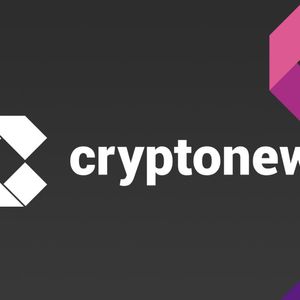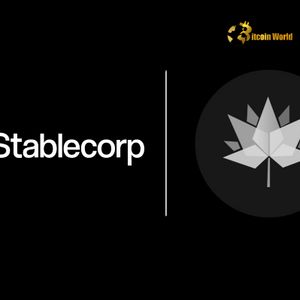Cardano has entered a pivotal chapter in its evolution as it fully transitions to a decentralized governance framework, a landmark achievement underscored in Messari’s latest Q1 2025 report. Despite headwinds in price and user activity, the network’s governance and ecosystem development reveal a blockchain steadily maturing into a community-led project. On-Chain Constitution Ushers in New Era of Governance One of the most transformative events for Cardano in the first quarter of 2025 was the ratification of its on-chain Constitution on February 24. This development signifies the formal beginning of Cardano’s Voltaire era, with governance responsibilities now decentralized through CIP-1694. The community now has a significant say in network decisions via an intricate structure of Stake Pool Operators (SPOs), over 1,220 Delegated Representatives (DReps), and a Constitutional Committee. The shift also marked the handover of governance control from the founding entities—IOG, Cardano Foundation, and EMURGO—to the community, supported by eight Intersect-led technical and advisory committees. Cardano now joins the ranks of a select few blockchains governed by a live, constitutional system that empowers its user base with real decision-making authority. ADA Faces Market Challenges Amid Structural Progress While Cardano achieved notable governance milestones , its native token, ADA, encountered a turbulent financial quarter. ADA’s value dropped by 22% compared to the previous quarter, landing at $0.66, echoing the broader crypto market downturn of 19%. The circulating market cap fell to $23.8 billion, maintaining Cardano’s position as the ninth-largest digital asset. Network activity also took a hit, with daily transaction counts sliding 28% to approximately 71,500. Additionally, network fees, denominated in USD, saw a 32% decline to $1.2 million. However, fee volatility mirrored ADA’s price action: while the average fee in USD increased by 27% to $0.29, the equivalent in ADA rose just 1% to 0.34 ADA, highlighting the impact of market fluctuations on user costs. Contrasting Trends: Stablecoin Growth vs. DeFi Contraction Despite an overall reduction in decentralized finance activity, Cardano’s stablecoin sector exhibited strong growth. The Total Value Locked (TVL) in DeFi protocols dropped 29% quarter-over-quarter to $319.3 million, underperforming the broader DeFi market’s 26% decline. Yet, stablecoins on the Cardano network expanded by 30%, reaching a combined market cap of $30.2 million. Leading this surge was USDM, which saw a 40% uptick, and the newly introduced USDA, which amassed a market cap of $7.2 million shortly after launch. This divergence between falling DeFi TVL and rising stablecoin usage suggests that investors may be taking a more risk-averse stance, opting to preserve capital in stable assets over actively participating in yield farming or trading. Defi Protocols Evolve Amid Shifting User Preferences Several major decentralized applications on Cardano saw declines in locked value but remained active in adapting to market conditions. Minswap regained its leading position with a TVL of $77.4 million, surpassing Liqwid, which fell 38% to $70.3 million. Indigo, WingRiders, and Splash also reported decreases but continued to engage users and ship updates. We are on twitter, follow us to connect with us :- @TimesTabloid1 — TimesTabloid (@TimesTabloid1) July 15, 2023 Notably, DexHunter maintained dominance in trading volume among decentralized exchanges. The platform rolled out leveraged trading and unveiled a developer API, indicating plans to drive growth and adoption despite the bearish market. Cardano’s DeFi diversity score rose to 9, reflecting a growing range of active protocols despite the overall decline in total value locked, an encouraging sign of ecosystem resilience. Treasury Expands in ADA, Shrinks in Dollar Terms The treasury’s balance increased by 5% in ADA terms, reaching 1.7 billion ADA. However, due to ADA’s price drop, its valuation in USD fell by 19% to $1.1 billion. With 20% of network fees funneled into the treasury, the fund remains a vital mechanism for supporting community-chosen development initiatives. As the governance framework becomes increasingly community-driven, the treasury is expected to play a central role in funding proposals, infrastructure upgrades, and ecosystem expansion, subject to oversight by elected representatives and stakeholders. A Resilient Foundation for the Future While ADA’s Q1 financial performance and transaction metrics mirrored broader market declines, the quarter’s structural achievements tell a different story. Cardano’s transition to constitutional governance places it among the most decentralized and democratic blockchain ecosystems in operation today. By empowering its global user base through on-chain governance mechanisms, Cardano is setting the stage for a more accountable and transparent blockchain future. The platform’s deepening DeFi ecosystem, growing stablecoin adoption, and expanding treasury underscore a project that, while not immune to market cycles, is building for long-term sustainability and resilience. Disclaimer : This content is meant to inform and should not be considered financial advice. The views expressed in this article may include the author’s personal opinions and do not represent Times Tabloid’s opinion. Readers are urged to do in-depth research before making any investment decisions. Any action taken by the reader is strictly at their own risk. Times Tabloid is not responsible for any financial losses. Follow us on Twitter , Facebook , Telegram , and Google News The post Cardano (ADA) Embraces Decentralized Governance Amid Mixed Market Performance in Q1 2025 appeared first on Times Tabloid .


















